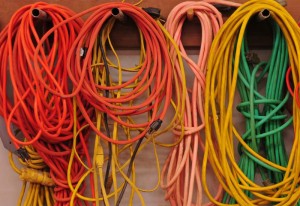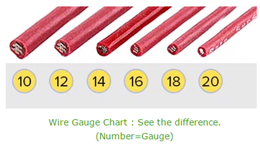 Planning that perfect Thanksgiving meal and coordinating the large amount of dishes to complete can be a hassle. But, no matter how much work is going on, it’s important to stay vigilant and always be aware of what’s going on in the kitchen. There are a number of safety hazards to be aware of from cooking fires to food contamination.
Planning that perfect Thanksgiving meal and coordinating the large amount of dishes to complete can be a hassle. But, no matter how much work is going on, it’s important to stay vigilant and always be aware of what’s going on in the kitchen. There are a number of safety hazards to be aware of from cooking fires to food contamination.
Cooking fires
Thanksgiving day has the most house fires of the year by far, about four times higher than the daily average. Historically, there have been an average of 1800 house fires each Thanksgiving, compared to 500 on an average day, 860 the day before Thanksgiving, and 840 on Christmas. It’s important to understand how quickly a fire can spread, the leading causes of cooking fires, and how to quickly extinguish a fire in the event of an emergency. Check out this infographic to be in the know.
Turkey fryer fires
In addition to all of this information, let’s review the safety (or lack of safety) of turkey fryers. Underwriter Laboratories (UL – trusted source that tests and certifies safe products) has still not found a single turkey fryer that they are willing to approve. There are zero regulations to how they’re built, many have a lack of stability, and the general design for turkey frying leads to frequent fires. Watch this video from the National Fire Prevention Association to see for yourself the safety hazards posed by turkey fryers.
Food contamination
A third safety hazard to be aware of this Thanksgiving is food contamination. Since November 2017 the CDC has reported 165 persons affected by salmonella in 25 states. With 63 people being hospitalized and a reason recall of ground turkey due to contamination, it’s important to know how to keep your food safe. Follow these tips for your turkey preparation.
Learn more about creating a safe and happy Thanksgiving, listen in to People’s Law Talk as Kevin King discusses all of these safety points in depth.
Want to hear more talks from Peter and Kevin King? Tune into WCIS 1010 AM Columbus, IN the first and third Friday of every month for People’s Law Talk.
There are many other great resources for understanding kitchen safety this Thanksgiving:
National Fire Prevention Association
Ridge Fire Company. (2003). “Product safety tips – Gas fired turkey fryers.” Available from: http://ridgefirecompany.com/downloads/UL_publiceducators_turkeyfryers-eng_200307.pdf



 It’s almost time for feasts and celebrations of all the things we hold dear. At the same time many will be celebrating all they have, some will be losing their material possessions and those they love. Thanksgiving Day is the leading day for house fires.
It’s almost time for feasts and celebrations of all the things we hold dear. At the same time many will be celebrating all they have, some will be losing their material possessions and those they love. Thanksgiving Day is the leading day for house fires.

